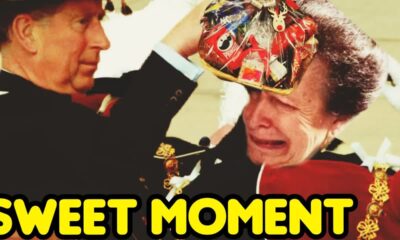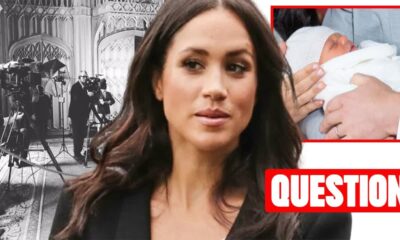Must Read
From “Tungsten” to Turmoil: The Royal Transformation of Meghan Markle
In the constantly evolving narrative surrounding Prince Harry and Meghan Markle, new revelations shed light on the dramatic shifts within the royal family.
One particularly striking detail is a nickname bestowed upon Meghan by King Charles, which now seems laden with irony given the current state of affairs.
This story not only highlights the initial optimism surrounding Meghan's entry into the royal fold but also serves as a stark reminder of how quickly things can change.
Once upon a time, King Charles, then known as Prince Charles, viewed Meghan as a formidable addition to the family.
He affectionately dubbed her “Tungsten,” a name that speaks volumes about his admiration for her resilience and strength.
For those who might not recall their chemistry lessons, tungsten is a robust metal, renowned for its toughness and high melting point, scoring an impressive 9 on the Mohs scale of mineral hardness.
This nickname was a testament to the impression she made during her debut at the Royal Foundation Forum in February 2018.
At that forum, Meghan shone brightly alongside Harry, William, and Catherine.
According to Katie Nicholl's book, The New Royals, she captivated the audience with her charisma and eloquence, quickly becoming the standout star of the event.
It was a moment of unity, where the future daughter-in-law demonstrated her capabilities and charm, leading Charles to take a personal interest in her.
In a further show of support, Charles walked Meghan down the aisle during her wedding when her father was unable to attend.
This gesture was not merely ceremonial; it symbolized a heartfelt welcome into the royal family.
The Queen herself expressed concern over Meghan's relationship with her estranged father, advocating for reconciliation before the wedding—a clear indication of the royal family's desire to embrace her.
Yet, the transformation from “Tungsten” to the current estrangement is nothing short of astonishing.
The very qualities that initially impressed Charles seemed to have morphed into rigidity, rather than the adaptability that true strength demands.
While resilience is commendable, it requires a balance of flexibility and teamwork, traits that have become increasingly apparent in the actions of other royals like Catherine.
The contrast between Meghan's early days in the family and her current situation paints a vivid picture of this shift.
From being warmly welcomed by the future king to being noticeably absent from significant royal events, including Charles's coronation, it's clear that the dynamics have drastically changed.
This narrative resembles a modern-day Greek tragedy, showcasing how first impressions can be deceiving.
Interestingly, while tungsten is celebrated for its strength, it is also known for its brittleness; it can shatter under pressure.
This metaphor resonates with the challenges Meghan faced within the constraints of royal life.
The expectations of duty and service often clash with individual desires, and not everyone can navigate those waters successfully.
In stark contrast, the working royals—William, Catherine, and Queen Camilla—exemplify a different kind of strength.
They embody resilience through their dedication to duty and their ability to adapt to changing circumstances.
Catherine, in particular, has demonstrated grace under pressure, while William has shown steady leadership, balancing tradition with the need for progress.
The fact that the nickname “Tungsten” has fallen out of use underscores the shift in perception surrounding Meghan.
Once a symbol of hope and potential, it now represents a bygone era when goodwill and acceptance were abundant.
As the royal family continues to navigate its challenges, the absence of such affectionate nicknames serves as a reminder of what could have been.
Reflecting on this situation raises intriguing questions about the nature of strength and adaptability.
What if Meghan had channeled her resilience toward strengthening the monarchy instead of challenging it?
Imagine a scenario where she worked alongside Catherine, complementing rather than competing, and contributing positively to the institution's evolution.
As the royal family demonstrates real strength in the face of adversity, public sentiment has shifted dramatically.
The British public has rallied around the working royals, recognizing their commitment to duty and service.
Meanwhile, the distance between certain members of the family and the institution they once aspired to join continues to grow.
This unfolding saga highlights the complexities of personal relationships within the royal framework.
It serves as a poignant reminder that first impressions, while powerful, can often mask deeper issues.
The story of Meghan's nickname and its implications encapsulates the broader narrative of her journey within the royal family—a journey filled with promise but ultimately marked by division.
As we ponder these developments, it's worth considering the significance of nicknames themselves.
Do they reveal more about the relationships between individuals than we realize?
In Meghan's case, “Tungsten” may have been intended as a compliment, but it now feels like a cold, unyielding reminder of how quickly fortunes can change in the spotlight of royalty.






























